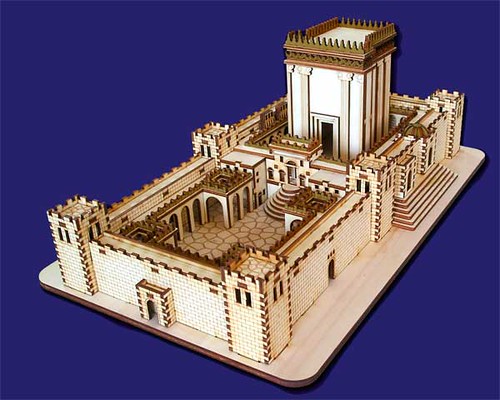 |
The artifact, considered the first confirmation of certain ritual Temple practices. |
Scholars offer new explanation for rare Temple artifact in Jerusalem ...
(Gee, I Wonder Why They Haven't Found Any Ancient Palestinian Artifacts ... hmmm?)
Object, at the northwestern corner of the Temple Mount, was initially thought to read 'Daka LeYa,' which means 'pure to God' in Aramaic.
A new interpretation is being put forward for the inscription on a tiny clay object, only a week after it was touted as the first archaeological find to confirm written testimony of ritual practices at Jerusalem's Temple.
The object, discovered in an archaeological survey at the northwestern corner of the Temple Mount, was initially thought to read "Daka LeYa," which means "pure to God" in Aramaic.
The artifact, considered the first confirmation of certain ritual Temple practices.
Excavators Prof. Ronny Reich of the University of Haifa and Dr. Eli Shukron of the Israel Antiquities Authority told a press conference last week that this was a seal used to mark objects used in the Temple as ritually pure, and that such a seal is mentioned in the Mishna.
But Prof. Shlomo Naeh of the Hebrew University's Talmud department believes the inscription could be read differently. "I was sitting with my son and looking at the photograph, and in a moment of intuition, I realized what it could be," he told Haaretz Tuesday.
Naeh also believes the object is related to Temple worship and purity, but reads the inscription differently, as "Dakar a Leyehoyariv." Dakar in Aramaic means ram and a stands for aleph, the first day of the week, when the priestly order of Yehoyariv was on duty in the Temple.
Thus, the object was used in Temple worship, but not how Reich and Shukron believe it was, says Naeh. To ensure the purity of animal sacrifices offered in the Temple - and to maintain an economic monoply, Naeh believes - pilgrims had to buy their offerings in the Temple courts. They gave money to a treasurer who would exchange it for a token inscribed with the type of sacrifice they had purchased and the date.
Like Reich and Shukron, Naeh supports his theory with a mishnaic verse citing the existence of such tokens. With regard to Reich and Shukron's interpretation, he said: "Purity was very fluid; the touch of an impure person was enough to make the object impure, so it is unlikely such a seal existed."
He also said the object could not be a seal because it lacked a hole for a thread or a handle to affix it to another object.
"People have been saying the ancient sages fantasized everything about the Temple. But ... they knew what they were talking about. For me, this is uplifting. The sages of the Mishna, my guys, win out," Naeh said.

No comments:
Post a Comment